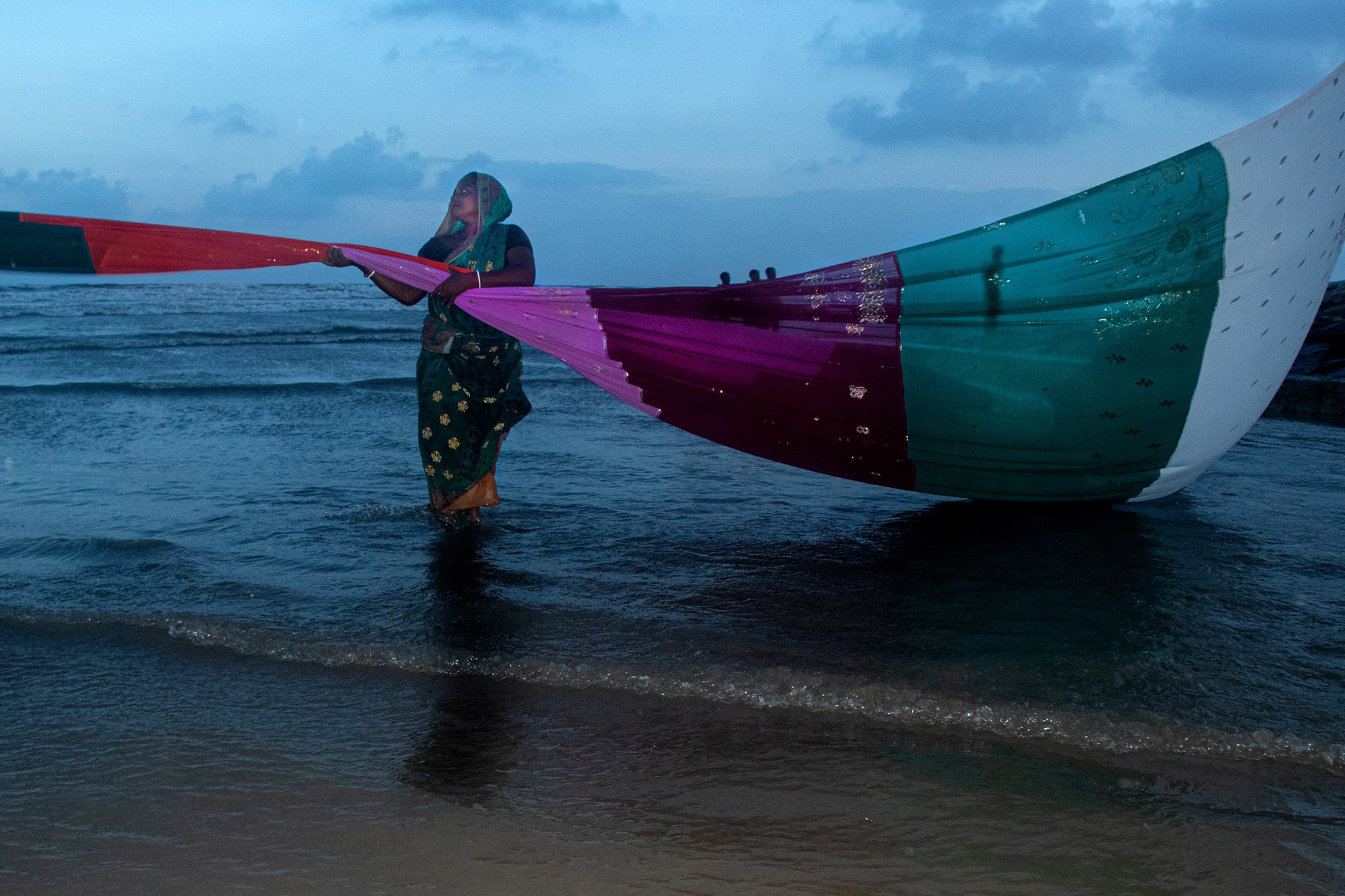Udaypur by Saikat Chanda
Udaypur is a tourist destination on the eastern coast of India by the Bay of Bengal. It is located within the territory of the Indian state of Odisha and close to the West Bengal border. The local folks earn their living through fishing and tourism. On weekends thousands of people gather on the beach to enjoy themselves.
Local vendors arrange seats around tables to serve the tourists drinks and other delicacies; colourful canopies are hung to protect them from the sun. These canopies are made from old clothes and are this place's most unique and exciting feature. The aroma of fried fish and crabs, the sounds of the music, laughter, chit-chats, occasional shouts and colours all around- colourful canopies, colourful clothes of tourists, and balloons make this place an altogether different world. And all of these mingled together creates vibrant and dynamic visuals. During ebb tides, when the water recedes, the seats are arranged, and canopies are hanged.
The very process of hanging the canopies against the strong sea wind is something to watch out for. But the canopies, made of old used fabrics, don’t last long and require replacement occasionally. Hence they are giving way to blue polythene sheets with much greater longevity. And it is feared that the vibrant colour scape will be replaced by a monotone of blue polythenes in a few years. And as a whole, the place is undergoing large-scale construction and concretisation, which is bound to change the very essence of the place.
This year I noticed a remarkable decline in the activity of fishermen with their boats and nets, which I found in the previous two years. That is due to the building of guard walls and, in the process blocking the way towards the sea, which the fishermen were used to following. During this development project, many vegetation has also been cut down. Hence it is very likely that after five to seven years, tourists shall find a different Udaypur at their disposal.























